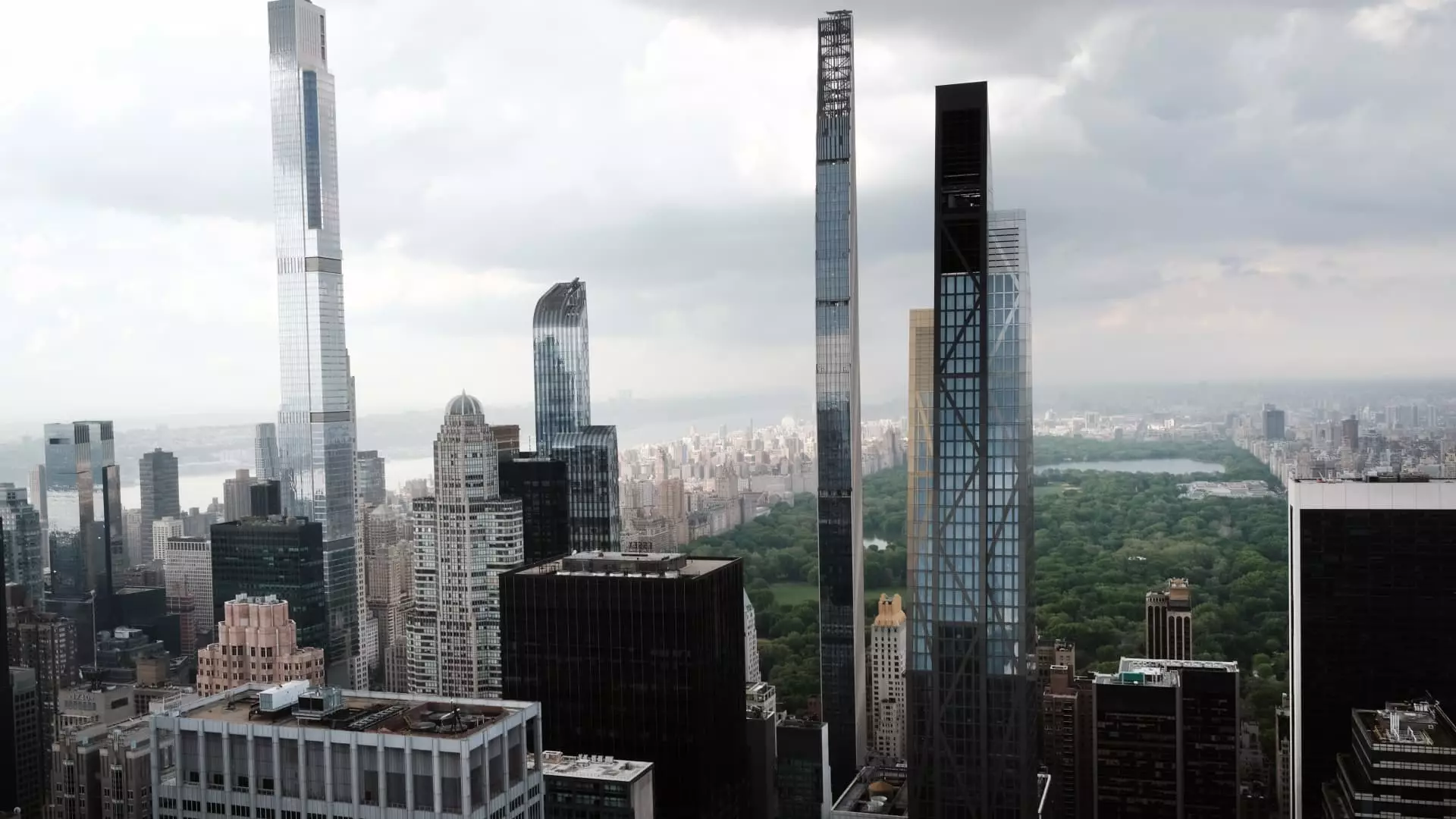Manhattan’s real estate market has recently displayed an intriguing trend: a whopping 29% increase in apartment sales in the first quarter compared to the same period the previous year. This leap to 2,560 closed sales from 1,988 a year ago signifies more than just numbers; it reveals a significant shift in how the wealthy perceive investment avenues amid stock market volatility. The savvy elite are channeling their wealth into real estate, considering it a more stable alternative. Recent reports indicate that real estate appraiser Miller Samuel and brokerage Douglas Elliman have highlighted this paradigm shift, while Compass adds that sales over $5 million surged by 49%.
This boom at the high end of the market reveals a desperate flight to tangible assets. Wealthy investors, insulated from mortgage dilemmas due to their tendency to buy properties outright, are moving confidently into the luxury sector. This phenomenon underscores a broader trend of generational wealth transfer and an appetite for solid investments. Yet, one must wonder: is this resilience truly a positive indicator, or is it a mirage in an increasingly fragile economic landscape?
The All-Cash Buyers’ Dominance
A staggering 58% of sales in this quarter were cash transactions, particularly prevalent in the luxury tier, where up to 90% of deals involved all-cash buyers. This seemingly robust indicator raises concerns about reliance on cash buyers to bolster the market. While the avoidance of mortgage complications positions these buyers advantageously, it also highlights a growing divide in the market. Are we increasingly sealing off homeownership from the average buyer, relegating it to a few elites who can afford to pay hundreds of thousands or millions in cash?
The phrase “cash is king” rings more true than ever in Manhattan, as it underscores a distressing trend of inequality in real estate. The weaker segment of the market—properties priced between $1 million and $3 million—saw a 10% decline in signed contracts. When perhaps the wealthiest demographic in history gravitates towards luxury properties, the mid-market struggle raises questions: Is this a healthy market correction, or simply a bubble waiting to burst as affluent buyers have fewer options to leverage their wealth against turbulent stock prices?
Returning Boomers: The Great Migration
The “boomerang wealthy,” individuals who formerly relocated to lower-cost states like Florida during the pandemic and are now retracing their steps back to New York, are a fascinating aspect of the current boom. This demographic trend, alongside the impacts of back-to-office mandates and rising property investment from family offices, reveals a unique narrative. The so-called “great wealth transfer” occurring from baby boomers to their heirs drives these trends. With trillions in assets changing hands, we’re witnessing an uptick in family members purchasing properties as long-term investments.
This migration underlines a sense of inevitability regarding Manhattan’s status as a premium real estate location. However, it prompts an essential inquiry: are these returning residents hoping to bolster a faltering local economy, or are they merely maintaining the status quo of wealth concentration? The influx of returning affluent citizens fundamentally shifts the market dynamics, yet we must question whether this movement reflects genuine economic growth or simply a financial game of musical chairs facilitated by generational wealth.
The Illusion of Market Robustness
Despite the attractive headlines regarding sales surges, we must maintain a critical lens. The remarkable 29% spike may create the illusion of stability, but beneath the surface lies an unsettling reality. Jonathan Miller, CEO of Miller Samuel, notes that despite the sales increase, the total sales volume remains a mere 1.1% higher than the historical average. Furthermore, the waning first quarter of 2024 suggests that the euphoria might be temporary, once again necessitating a cautious approach.
The thriving climate for luxury apartment sales may not be as robust as depicted. March saw a promising surge in signed contracts for high-end properties, but we need to evaluate whether these trends can sustain themselves. The precarious interdependence between not just the stock market, but also the broader economic conditions calls for caution. Will Manhattan’s luxury market be a beacon of resilience, or a house of cards trembling in the winds of economic uncertainty?
Navigating these turbulent times will demand adaptability from stakeholders across the spectrum, from luxury buyers to those hoping to secure their stake in Manhattan’s real estate. As the landscape continues to shift, we need to question not just the numbers, but the narratives that surround them. Are we witnessing a renaissance of Manhattan real estate or paving a path towards an ever-widening gap in homeownership? The answers to these questions will define the next chapters of this complex and intriguing market.

